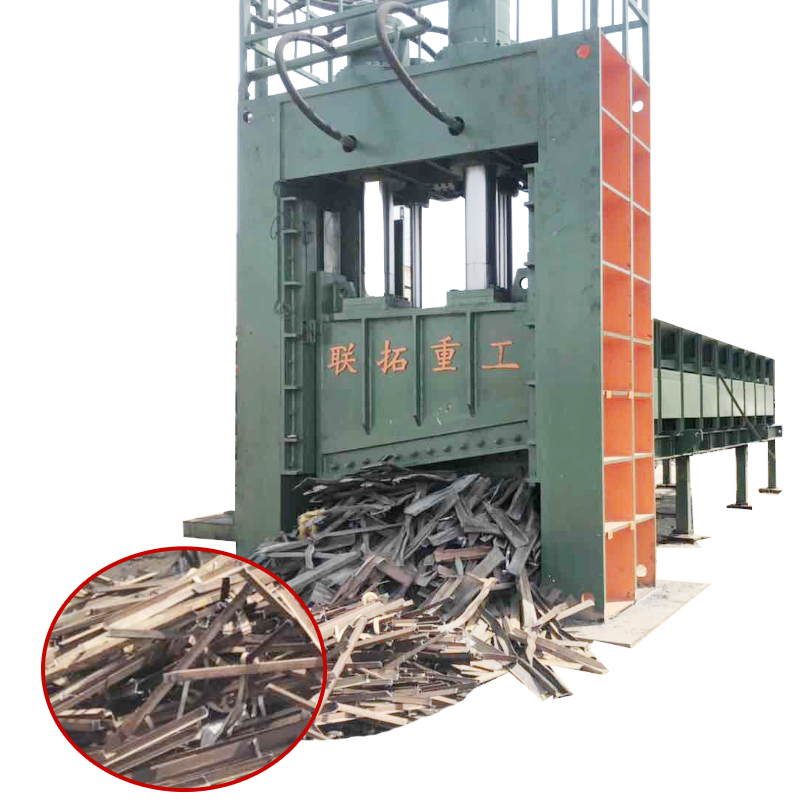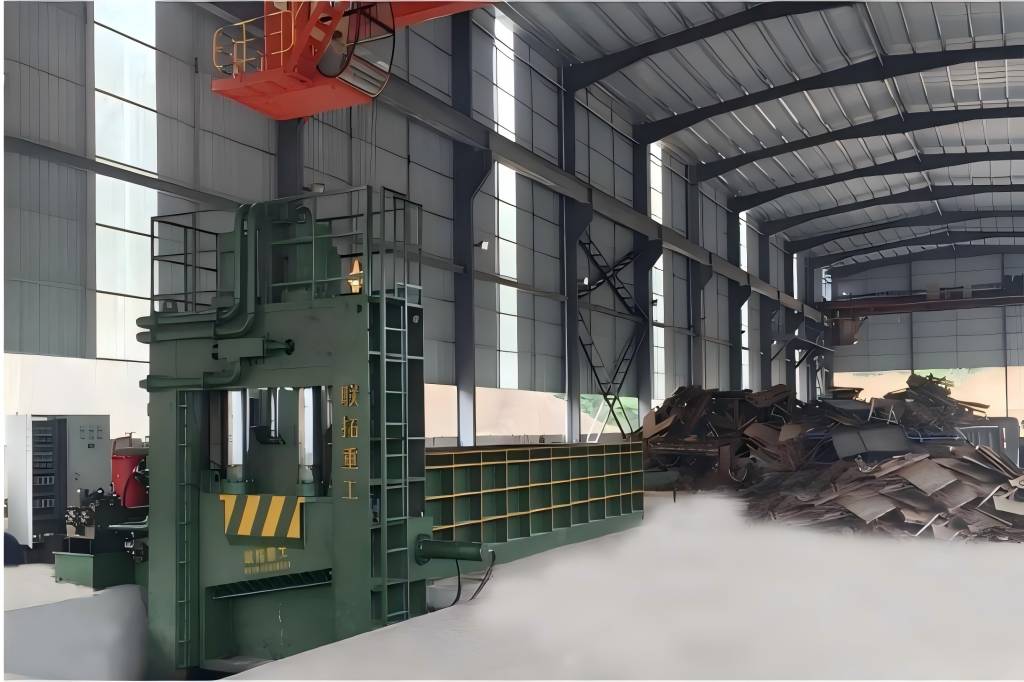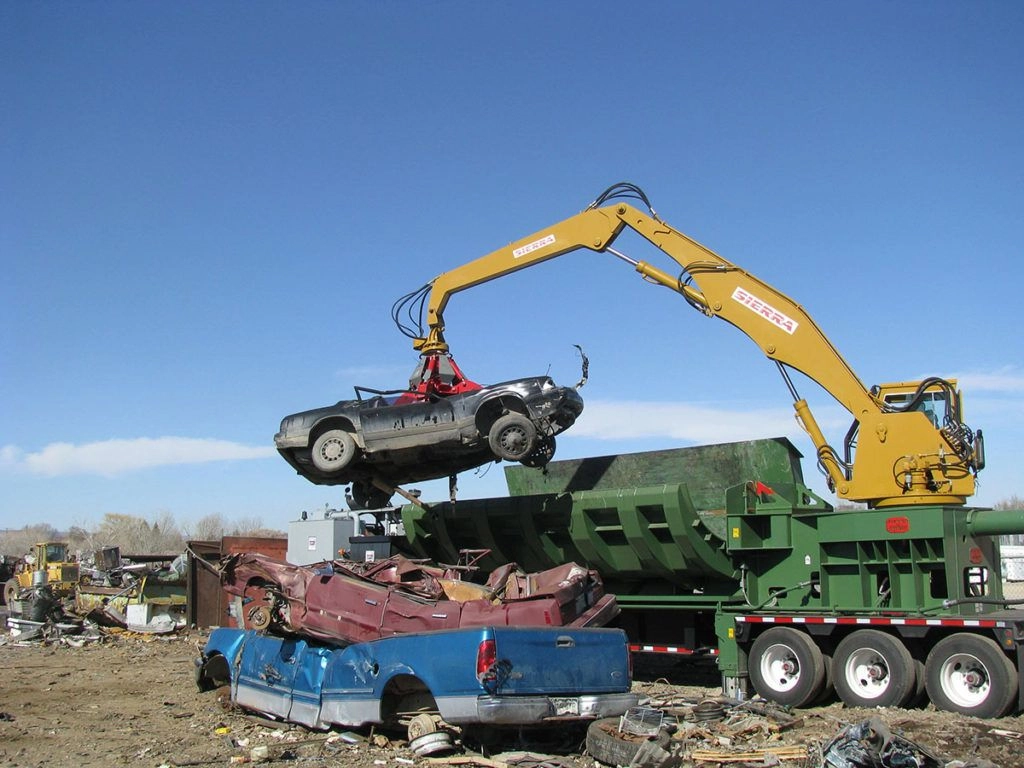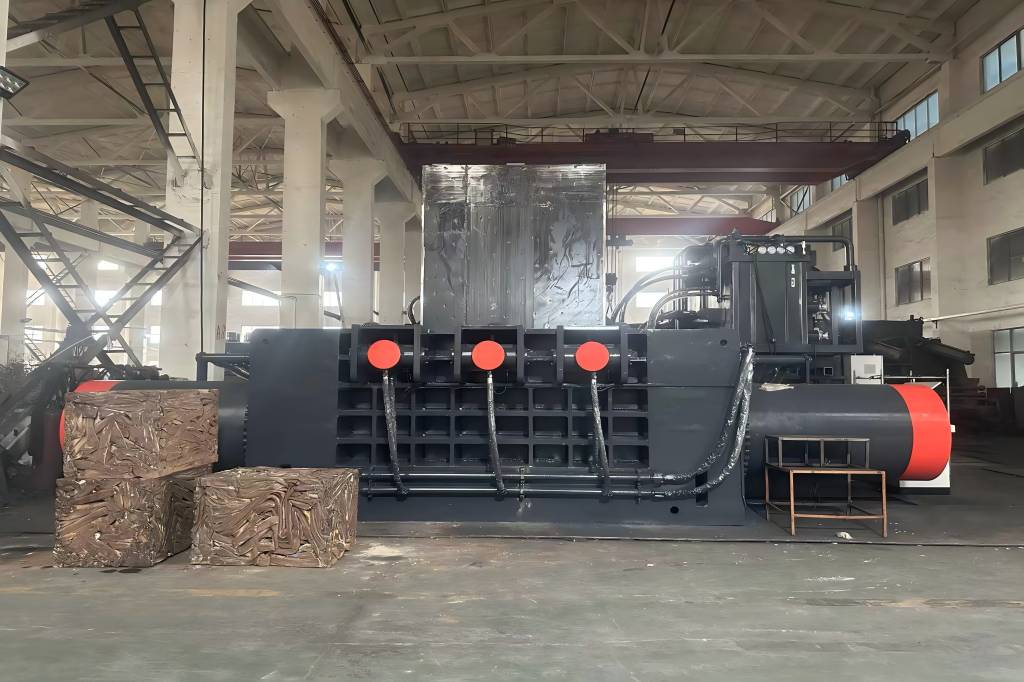Metal recycling is a rapidly growing industry that depends on advanced machinery for efficient operations. One of the most crucial machines in the sector is the gantry shear, designed for cutting and processing large metal scraps into manageable sizes.
Choosing the appropriate gantry shear can have a big impact on overall recycling productivity, cost savings, and efficiency.
Understanding the Role of Gantry Shears in Metal Recycling
Gantry shears are powerful machines used in metal recycling, scrapyards, and steel plants to cut large metal waste like beams, pipes, and car frames into smaller, transportable pieces.
Unlike standard cutters, gantry shears use high-force hydraulic or mechanical systems for precise, efficient cuts. They help lower handling costs, speed up processing, and ensure uniform scrap sizes.
Investing in the right gantry shear improves recycling operations, reduces labor, and enhances metal quality. Key factors include cutting force, blade durability, automation, and energy efficiency.
Types of Gantry Shears and Their Applications
Different gantry shears are designed for various recycling applications. Businesses can make better selections if they have a thorough understanding of these kinds
1. Hydraulic Gantry Shears
Hydraulic gantry shears use powerful hydraulic pressure to cut through thick metal. These machines are widely used in industrial scrap processing due to their high cutting force and durability.
They are best for handling heavy-duty scrap metal, structural steel, automobile frames, and industrial plates. Their ability to process high-strength materials makes them ideal for large recycling plants.
2. Mechanical Gantry Shears
Mechanical gantry shears rely on a system of gears and mechanical leverage for cutting. They are ideal for repetitive cutting jobs in manufacturing industries and provide excellent precision.
These shears are best for processing sheet metal, aluminum, and lightweight metals, making them popular in automotive and manufacturing scrap recycling operations.
3. Mobile Gantry Shears
Mobile gantry shears are designed for flexibility, allowing metal recycling companies to perform on-site cutting at demolition sites, shipbreaking yards, and remote recycling locations.
These shears are best for on-site scrap cutting, construction waste processing, and large-scale dismantling projects. Their portability ensures efficient cutting without the need to transport bulky materials to a fixed facility.
4. High-Speed Gantry Shears
Fast processing and efficiency are guaranteed by high-speed gantry shears for operations handling large amounts of scrap metal.
These machines are built for high-throughput applications, making them best for large-scale recycling plants, automotive industry scrap processing, and facilities handling bulk steel and aluminum cutting. Their fast cycle times help maximize productivity while maintaining accuracy.

Key Factors to Choosing the Right Gantry Shear
Choosing the best gantry shear requires careful evaluation of several critical factors. Investing in the right machine ensures efficiency, reduces costs, and optimizes productivity.
1. Cutting Capacity and Force
A gantry shear’s cutting capability dictates the kind and thickness of metal it can handle. The force, measured in tons, must align with operational needs to ensure efficiency and longevity.
- High-capacity shears (1000+ tons): These are ideal for heavy-duty applications, including cutting shipbreaking scrap, industrial-grade steel, and thick metal structures. Heavy-duty gantry shears are commonly found in large-scale recycling plants and steel mills where high force is necessary.
- Medium-capacity shears (500-1000 tons): Best suited for automotive recycling, mid-thickness aluminum sheets, and general metal processing. They are able to mix power with adaptability.
- Low-capacity shears (below 500 tons): Designed for lighter materials, including thin steel sheets, electrical wires, and small-scale metal scrap processing. They are cost-effective for smaller recycling operations.
2. Blade Durability and Precision
In order to maintain cutting efficiency, shear blade quality and durability are essential. Investing in high-quality blades extends operational lifespan and reduces maintenance costs.
- Hardened steel blades: exceptionally durable, they lessen the need for frequent replacements.
- Adjustable blade gaps: Essential for accommodating different metal thicknesses, ensuring versatility in processing.
- Automated blade sharpening systems: These improve precision, maintain optimal cutting performance, and reduce manual maintenance.
3. Processing Speed and Throughput
A gantry shear’s processing speed determines how efficiently it can handle large scrap volumes. Facilities with high throughput requirements should prioritize speed without sacrificing accuracy.
- Fast-cycle shears: Designed for continuous cutting with minimal downtime, improving workflow efficiency.
- High-pressure hydraulic systems: Enable rapid metal processing without compromising cut quality.
- Automated feeding systems: maintain a consistent material flow, minimize manual handling, and enhance production efficiency.
4. Automation and Control Features
Modern gantry shears come with advanced automation features that enhance safety, precision, and ease of operation. Automation avoids errors, increases efficiency, and decreases manual labor.
- PLC-based (Programmable Logic Controller) controls: Allow operators to program specific cutting parameters for different types of metal. This feature enhances efficiency and consistency.
- Remote control operation: Improves safety by allowing workers to operate the shear from a distance, minimizing risks associated with manual operation.
- Self-diagnostic features: These systems detect and alert operators to maintenance needs, reducing unexpected breakdowns and ensuring continuous productivity.
- Automated scrap sorting and separation: Some advanced models integrate material classification technologies, improving recycling efficiency.
5. Structural Design and Space Utilization
Gantry shears come in different structural configurations, and the choice of design depends on the available space and operational requirements.
- Fixed gantry shears: Designed for permanent installations, these machines are best suited for high-volume industrial recycling plants.
- Mobile gantry shears: Provide flexibility for on-site cutting, making them ideal for demolition projects, shipbreaking yards, and remote scrap processing.
- Rail-mounted gantry shears: Used in large-scale recycling facilities, these shears allow systematic movement of materials and ensure continuous operation.
6. Energy Efficiency and Environmental Impact
Energy efficiency is a major consideration in reducing operational costs and promoting sustainable recycling practices.
- Eco-friendly hydraulic systems: Minimize energy consumption while maintaining high cutting force.
- Low-emission motors: Reduce environmental impact and comply with sustainability regulations.
- Intelligent power control systems: By automatically modifying power use according to workload, you can maximize energy use.
7. Maintenance and Ease of Serviceability
A well-maintained gantry shear ensures consistent performance and reduces unexpected downtime. When selecting a shear, businesses should evaluate:
- Ease of blade replacement: Quick-change blade designs minimize downtime and improve efficiency.
- Hydraulic system maintenance: Shears with self-lubricating or low-maintenance hydraulic systems reduce servicing needs.
- Availability of spare parts: Choosing a model with readily available parts ensures fast repairs and reduces downtime.
- After-sales support: Opting for manufacturers that provide training, technical support, and maintenance services improves long-term reliability.
8. Safety Features
Due to the immense force and power involved in gantry shear operations, safety must be a top priority. Modern gantry shears incorporate several features to protect operators:
- Emergency stop mechanisms: Allow immediate machine shutdown in case of emergencies.
- Protective barriers and enclosures: Prevent accidental injuries by keeping operators away from hazardous moving parts.
- Operator training programs: Ensure workers understand machine handling and emergency procedures.
- Automated safety interlocks: Prevent the machine from operating if a safety protocol is not followed.
Conclusion
Selecting the right gantry shear is crucial for maximizing efficiency in metal recycling. By considering factors such as cutting capacity, automation, energy efficiency, and safety, businesses can make informed decisions that enhance productivity and profitability.



